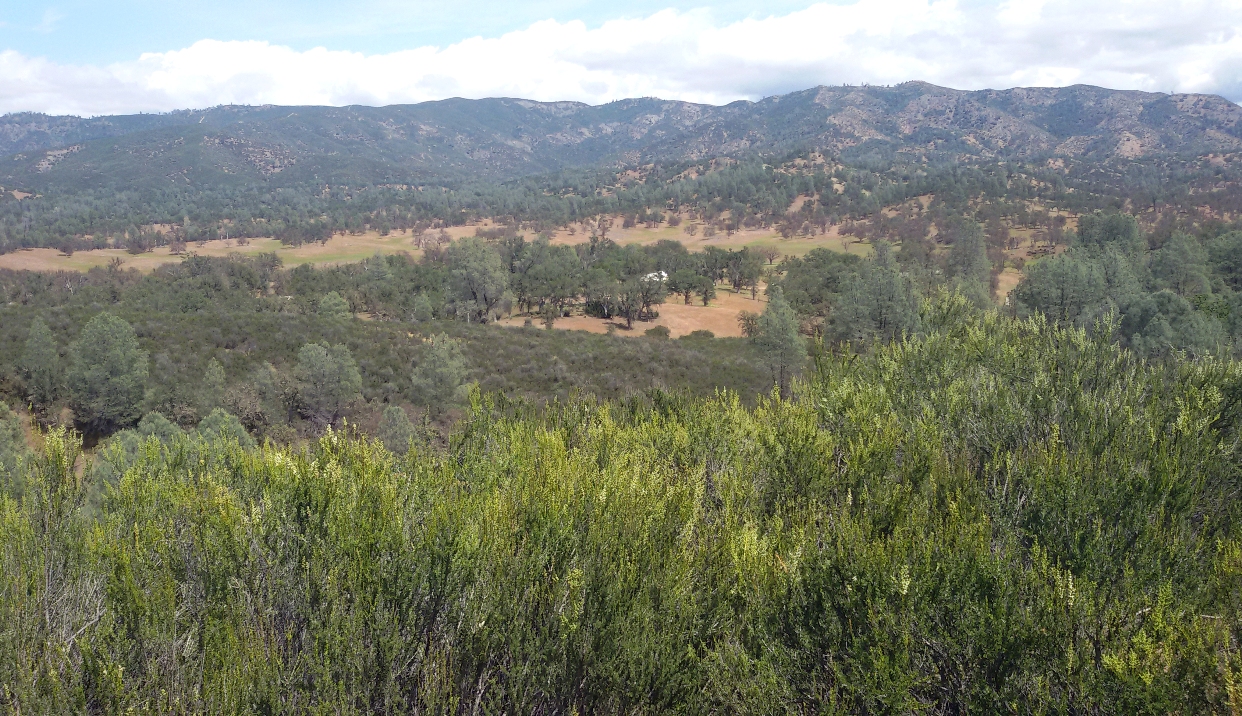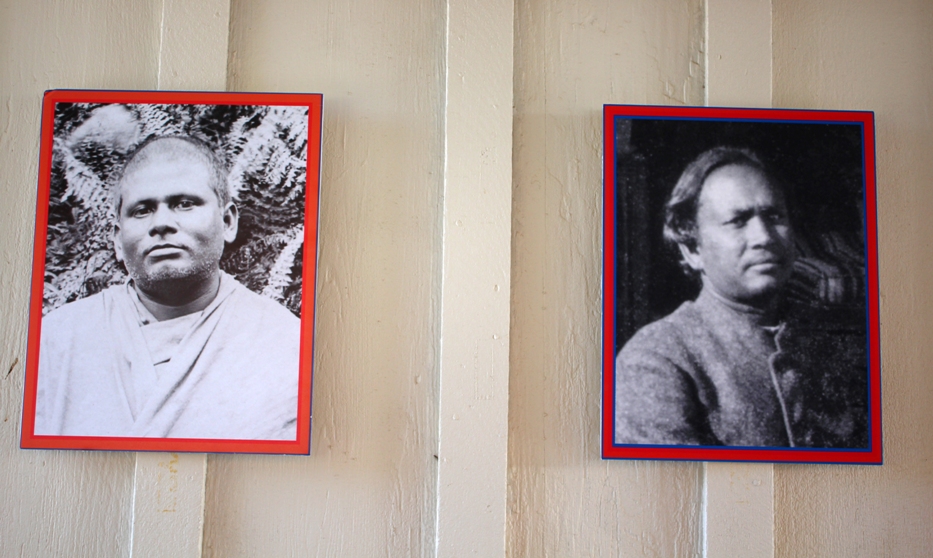During a conversation with Swami Tyaganandaji, Head of Vedanta Society Boston he spoke about the Memorial Day Function at Shanti Ashrama i.e. held on April 25th every year and suggested I go.
A few days later met with Swami Tattwamayananda, Head of the Vedanta Society of Northern California, San Francisco who kindly arranged for a devotee to drive me to the Ashrama.
Friends back home said that Shanti Ashrama was one of important pilgrimage places of the Ramakrishna Order and was lucky to be in San Francisco then.
What is the significance of Shanti Ashrama?
During his first visit to the West, Swami Vivekananda had often spoken of the need for a Vedantic ashrama or retreat in America. Deeper intent was to have a place where seekers could meditate intensely.
When discussed in the New York Society, of which Swami Abhedananda was in charge, a student Miss Minnie C. Boock, offered in Santa Clara County, California 159 odd acres of land.
So Swamiji asked Swami Turiyananda, to whom he had already assigned the California work, to establish the ashrama. “It is the will of the Divine Mother that you should take charge of the work there,” Swamiji told him. Swami Turiyananda smiled, “Mother’s will? Rather say it is your will. Certainly you have not heard the Mother communicate Her will to you in this matter.”
Thus, Swamiji's dream took shape in 1900. Thereafter, Swami Turiyananda and Swami Trigunatita, both direct disciples of Sri Ramakrishna and Swami Prakashananda gave rigorous training to spiritual aspirants there.
 View of Shanti Ashrama from Dhuni hill.
View of Shanti Ashrama from Dhuni hill.
"Swami Turiyananda was a jivanmukta, which according to Vedanta is defined as one who is freed while living, having transcended body consciousness, and is immersed in the divine Reality. But more than being a profound scholar, he had assimilated what he studied and verified it through his own direct experience.
Sister Gargi observed, “The residence of a great soul can create a great retreat, and this, one thinks, is why Swami Vivekananda asked so very great a soul as Swami Turiyananda to establish a center there.”
The evening campfire was inaugurated almost upon arrival, continuing nightly thereafter. Ida Ansell, remembered the first campfire at the ashrama: “We sat in a circle around the fire and listened to swami’s deep, rich voice chanting in melodious Sanskrit, ‘We meditate on the adorable and effulgent light of Him who has produced this universe. May He enlighten our hearts."
With time Swami Turiyananda and students pitched tents for a kitchen, dining room, several outhouses etc as well as a small meditation cabin, which stands to this day. Importantly, a daily routine was established which blended spiritual with practical lives.
Swamiji returned to India in 1902.
Even today the Ashrama has no electricity, water and cell phone connectivity. Imagine how difficult it was reach and stay in 1899!
The second great period of Shanti Ashrama was Swami Trigunatita’s time. It lasted from 1903 until his death in 1915.
He held month-long retreats in the study and practice of Vedanta for about 40 students. Swamiji believed that in large classes students would learn faster if activities were regular and disciplined. The retreats were called Yoga Classes and included all the four yogas.
Swamiji did a lot of work himself for eg "he carved out a path up Dhuni Hill through chaparral by himself. He was responsible for instituting many inspiring customs at the ashrama such as sitting all night performing spiritual practices, most especially meditation, before a fire at the top of Dhuni Hill, which was called the dhuni fire ceremony."
"Swamiji developed a water scheme which included a windmill and water tank, which were carted in from Livermore over the perilous road."
 Left is Swami Trigunatita and right Swami Turiyananda.
Left is Swami Trigunatita and right Swami Turiyananda.
The third great period was from 1915 to 1927 during Swami Prakashananda’s time.
"As assistant swami, he helped build up the ashrama traditions, such as the singing and chanting programs, the dhuni fire ceremony, the Sanskrit classes, the daily karma yoga work periods and meditations, etc". His death put an end to regular retreats at the ashrama.
During the 1920s, Swami Prakashananda regularly brought groups of students to the ashrama. Later individuals occasionally took advantage of the ashrama atmosphere, but organized group retreats no longer occurred.
A fire in 1952 burned thousands of acres of neighbouring grassland/forests including most of the ashrama's trees and buildings. A noteworthy survivor was the mediation cabin - today become the ashrama's symbol.
On the occasion of the 75th anniversary of the Vedanta Society of Northern California and Shanti Ashrama in 1975, the Society invited its members and friends for a daylong program which included music, chanting, guided tours of the ashrama and talks by prominent Swamis.
The nearly two hour drive from San Jose was uphill and winding in parts, very scenic. We reached the Ashrama by 11 am. It was as if I had entered a different world where peace and serenity reign supreme.
There were about fifty devotees including some foreigners. Morning session consisted of Meditation and Flower offerings by devotees. A temporary tent was made next to the meditation cabin.
After a sattvic lunch, organised by lady devotees, we were taken on a conducted tour of the Ashrama by Swami Vedananda.
Swamiji took us to the various points where log huts originally stood and gave us a lucid commentary. Lastly we walked up to Dhuni hill.
Swami Trigunatita had carved a path through the bushes. On some days they would gather in top of the hill, bring firewood then chant and meditate all through the night. They would greet the rising sun and then return down.
To symbolise earlier times firewood is kept on top of the hill and surrounded by a rope. Part of the ashes of Swami Prakashananda are buried there. It has thus become a sacred place.
Post chanting we were enlightened by Mission Swamis of Chicago, San Francisco, Berkley and Sacramento.
In 1980 the meditation cabin was extensively renovated and is a symbol of Shanti Ashrama’s early days. Devotees go and meditate inside the cabin. I spent about fifteen minutes in the cabin and experienced the energies within.
Today no one stays at the Ashrama full time. It consists of open green spaces, wild flowers and hills.
I had not planned to visit Shanti Ashrama, in fact did not know about its existence. When Ishwar desires things just happen and everything falls in place. People enter your life from nowhere to help you get there.
It was Shanti Shanti Shanti all the way back home. I am indebted to all those who made this Yatra happen.
The Author is a spiritually inclined traveller and founder of www.esamskriti.com
Information on history and quotes taken from http://sfvedanta.org/the-society/history/shanti-ashrama-history/
To see pictures of Shanti Ashrama Click here